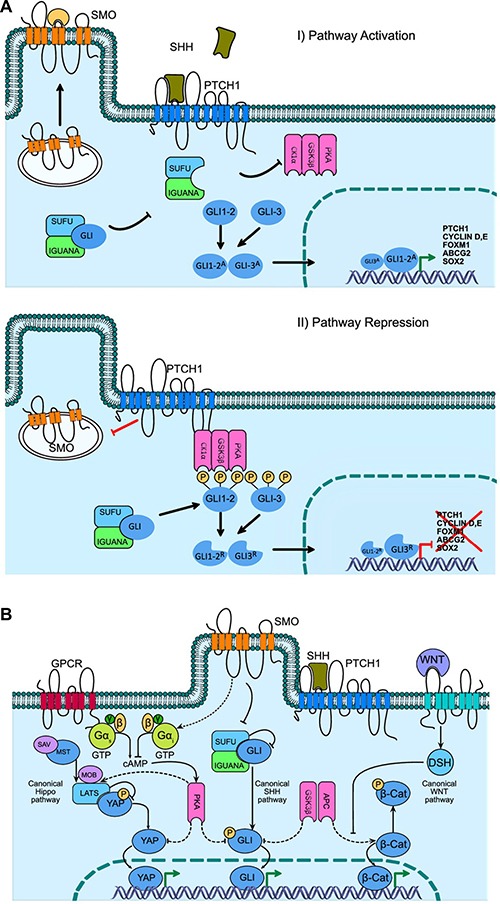Figure 1. Hedgehog signaling pathway.

Gene activation, repression and cross-talk with other key self-renewal pathways (A) Activation of the Hh pathway begins with the binding of the SHH ligand to the membrane receptor PTCH1, removing the catalytic inhibition on SMO and promoting its displacement to the cell membrane for a posterior interaction with an endogenous ligand (a GTPase type protein has been proposed), promoting the nuclear translocation and transcriptional activity of GLI1A. The absence of SHH maintains the interaction of PTCH1 on SMO, contributing to the inhibition by blocking its displacement to the cell membrane, and promoting GLI proteolysis, which translocates as GLIR, this in turn modulates the transcriptional repression of, among others, PTCH1, Cyclin D and E, FOXM1, ABCG2, SOX2. (B) The cross-talk between renewal and cancer pathways is mediated by the PKA and GS3Kβ kinases, with the canonical Hippo PKA being able to phosphorylate the LATS and MOB proteins by carrying a cascade of phosphorylation to YAP, inactivating its nuclei translocation capacity. While the WNT pathway, through GS3Kβ in conjunction with APC phosphorylates β-Catenin, promoting proteasome degradation and inhibition of translocation to nucleus, while equally PKA and GS3Kβ phosphorylate members of the GLI family, preventing its translocation to nucleus and altering its functional cell signaling capacity.
